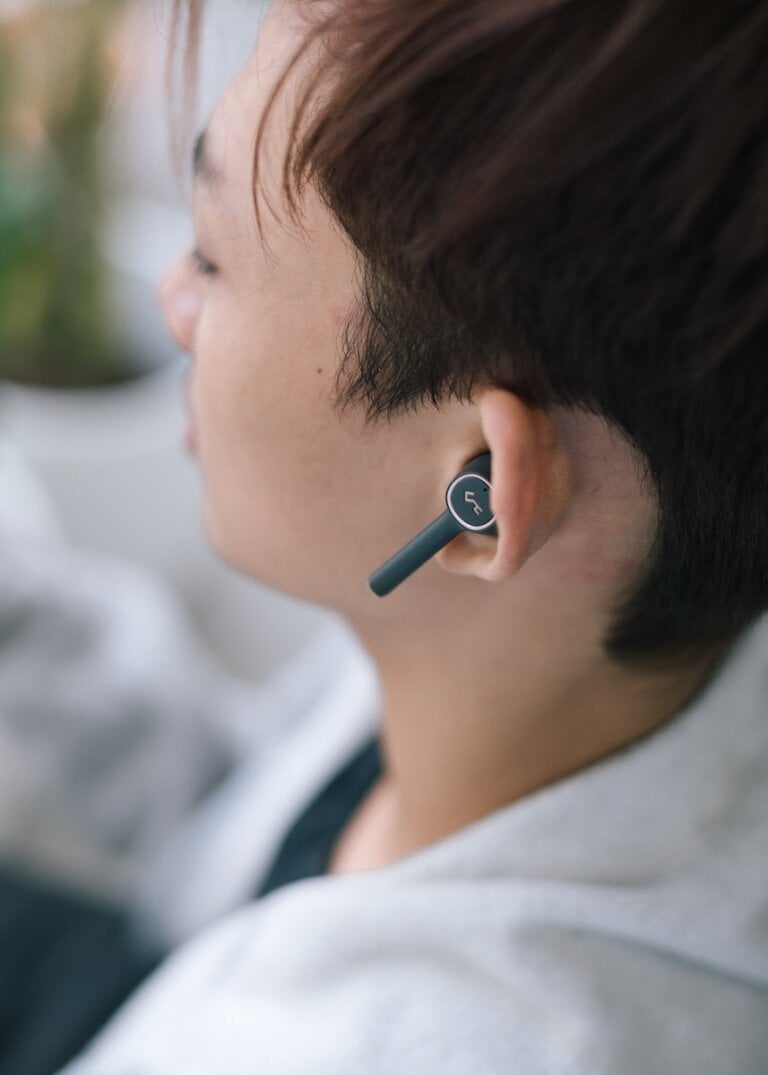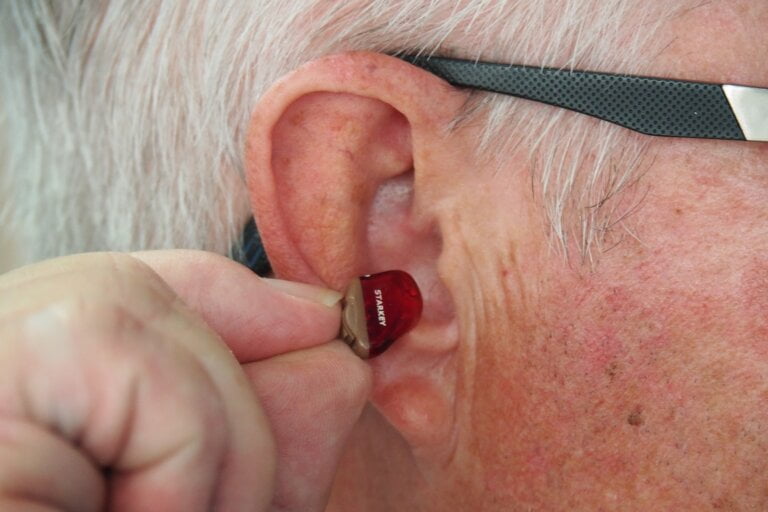The Middle of the Problem: A Comprehensive Guide to Otitis Media
Otitis Media, commonly known as an ear infection, is a prevalent condition that affects people of all ages, particularly children. It occurs when the middle ear becomes inflamed due to infection or fluid buildup. This comprehensive guide aims to provide valuable insights into the causes, symptoms, diagnosis, treatment, and prevention of otitis media.
Understanding Otitis Media
Otitis Media can be classified into three types: acute otitis media (AOM), otitis media with effusion (OME), and chronic otitis media with effusion (COME). AOM is characterized by a sudden onset and is often associated with pain, fever, and a bulging eardrum. OME refers to the presence of fluid in the middle ear without any signs of acute infection. COME occurs when the fluid persists for an extended period, leading to hearing loss or other complications.
Otitis Media is a common condition that affects individuals of all ages. Acute otitis media (AOM) is the most common type, characterized by sudden onset and symptoms such as pain, fever, and a bulging eardrum. Otitis media with effusion (OME) refers to the presence of fluid in the middle ear without any signs of acute infection. This fluid can cause temporary hearing loss or a feeling of fullness in the ears. Chronic otitis media with effusion (COME) is a long-term condition where the fluid persists, potentially leading to hearing loss and other complications.
Common Causes and Risk Factors
Several factors contribute to the development of otitis media. The most common cause is bacterial or viral infection. Streptococcus pneumoniae, Haemophilus influenzae, and Moraxella catarrhalis are often responsible for AOM. Viruses such as respiratory syncytial virus (RSV) and influenza can also trigger ear infections.
In addition to infections, various risk factors can increase the likelihood of developing otitis media. These risk factors include:
-
Age: Children, especially those between 6 months and 3 years old, are more prone to otitis media due to their underdeveloped immune systems and Eustachian tubes. The Eustachian tubes, which connect the middle ear to the back of the throat, are shorter and more horizontal in young children, making it easier for bacteria or viruses to enter the middle ear.
-
Group childcare: Frequent exposure to other children increases the risk of infection transmission. Crowded environments, such as daycare centers, can facilitate the spread of bacteria and viruses among children, leading to an increased risk of developing otitis media.
-
Allergies: Nasal allergies can cause inflammation and blockage of the Eustachian tubes. When the tubes are blocked, fluid can accumulate in the middle ear, increasing the risk of developing otitis media.
-
Bottle feeding: Bottle-fed infants are more susceptible to ear infections compared to breastfed infants. Breast milk contains antibodies that help strengthen the baby’s immune system, reducing the risk of infections, including otitis media.
-
Exposure to secondhand smoke: Passive smoking can damage the respiratory system, making it more vulnerable to infections. Children who are exposed to secondhand smoke have a higher risk of developing otitis media.
In order to prevent otitis media, it is important to be aware of these risk factors and take appropriate measures to reduce their impact.
Recognizing the Symptoms
Identifying the symptoms of otitis media is crucial for early detection and appropriate treatment. The following signs may indicate the presence of an ear infection:
-
Ear pain or discomfort: Children may express this as pulling or tugging at their ears. The pain can range from mild to severe and may be accompanied by a feeling of pressure or fullness in the ear.
-
Fever: Otitis media often leads to a low-grade fever in affected individuals. Monitoring body temperature can help identify possible ear infections.
-
Irritability: Infants and young children may become fussy or cry more frequently. Irritability can be a sign of discomfort or pain caused by an ear infection.
-
Difficulty sleeping: The pain and discomfort associated with ear infections may disrupt normal sleep patterns. Children with otitis media may have trouble falling asleep or wake up frequently during the night.
-
Balance problems: In some cases, otitis media can affect balance, leading to dizziness or clumsiness. Children may have difficulty maintaining their balance or seem unsteady on their feet.
-
Hearing difficulties: Temporary hearing loss or muffled sounds are common during an ear infection. Children may have difficulty understanding speech or responding to sounds.
If any of these symptoms persist or worsen, it is essential to consult a healthcare professional for an accurate diagnosis and appropriate treatment.
Diagnosis and Treatment Options
Upon suspecting an ear infection, a medical professional will conduct a thorough examination. They may use an otoscope to visualize the eardrum and check for signs of inflammation or fluid accumulation. In some cases, a tympanometry test can measure the movement of the eardrum and diagnose OME or COME.
Treatment options for otitis media may vary depending on the type and severity of the infection. Here are some commonly recommended approaches:
-
Antibiotics: If the infection is bacterial or severe, a course of antibiotics may be prescribed to eliminate the bacteria and reduce inflammation. It is important to complete the full course of antibiotics as prescribed, even if symptoms improve, to ensure complete eradication of the infection.
-
Pain relief: Over-the-counter pain medications, such as acetaminophen or ibuprofen, can be used to manage ear pain and fever. These medications help reduce pain and discomfort, making the individual more comfortable during the healing process.
-
Ear drops: In certain cases, antibiotic ear drops may be recommended to alleviate symptoms and help clear the infection. These drops are applied directly into the ear canal and can help reduce inflammation and fight the infection.
-
Watchful waiting: For mild cases or OME, doctors may choose to monitor the condition closely without immediate medical intervention. This approach involves regular check-ups to assess the progress of the infection and determine if further treatment is necessary.
-
Surgical intervention: In chronic cases or when complications arise, surgical procedures like myringotomy or tympanostomy tube insertion may be necessary. These procedures involve creating a small incision in the eardrum to drain fluid and relieve pressure. Tympanostomy tubes can also be inserted to promote drainage and prevent future infections.
It is important to follow the healthcare professional’s instructions and complete the prescribed treatment to ensure complete recovery and minimize the risk of recurrence.
Preventing Otitis Media
While ear infections cannot always be prevented, some measures can significantly reduce the risk. Here are some preventive strategies:
-
Vaccinations: Staying up-to-date with recommended vaccinations, such as pneumococcal and influenza vaccines, can lower the chances of developing infections that may lead to otitis media. These vaccines help protect against common bacteria and viruses that can cause ear infections.
-
Avoid smoke exposure: Minimizing exposure to secondhand smoke helps protect the respiratory system and reduces the likelihood of ear infections. Creating a smoke-free environment is particularly important for young children who are more susceptible to the harmful effects of smoke.
-
Promote breastfeeding: Breastfeeding provides essential antibodies that strengthen the immune system, reducing the risk of infections. Breast milk also contains nutrients that support overall health and development, including the health of the Eustachian tubes.
-
Practice good hygiene: Regularly washing hands and teaching children proper hygiene practices can help prevent the spread of germs. Encouraging good hand hygiene and respiratory etiquette, such as covering the mouth and nose when coughing or sneezing, can reduce the risk of respiratory infections that can lead to otitis media.
-
Limit pacifier use: Prolonged pacifier use can increase the risk of ear infections. Encourage healthy alternatives like comforting toys or blankets. If pacifiers are used, ensure they are kept clean and avoid dipping them in sugary substances, as this can promote bacterial growth.
By implementing these preventive measures, individuals can take proactive steps to reduce the likelihood of developing otitis media and promote better ear health.
Conclusion
Otitis Media is a prevalent condition that can cause discomfort, pain, and temporary hearing loss. Understanding the causes, symptoms, diagnosis, treatment options, and preventive measures is crucial for managing this condition effectively. By following the guidelines outlined in this comprehensive guide, individuals can take proactive steps to prevent and address otitis media, promoting better ear health and overall well-being.
FAQ
1. What are the different types of otitis media?
- Otitis Media can be classified into three types: acute otitis media (AOM), otitis media with effusion (OME), and chronic otitis media with effusion (COME).
2. What are the common causes and risk factors for otitis media?
- The most common cause of otitis media is bacterial or viral infection. Risk factors include age (children between 6 months and 3 years old are more prone), group childcare, allergies, bottle feeding, and exposure to secondhand smoke.
3. What are the symptoms of otitis media?
- Symptoms of otitis media include ear pain or discomfort, fever, irritability, difficulty sleeping, balance problems, and hearing difficulties.
4. What are the treatment options for otitis media?
- Treatment options for otitis media include antibiotics for bacterial infections, pain relief medications, ear drops, watchful waiting for mild cases, and surgical intervention in chronic cases or complications arise.







